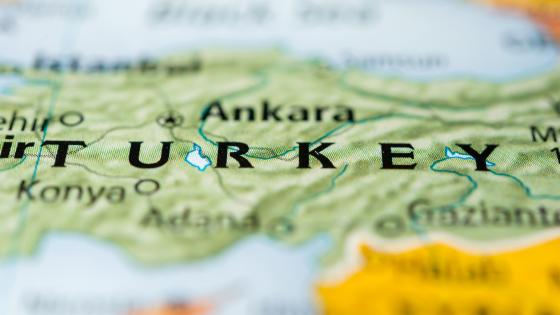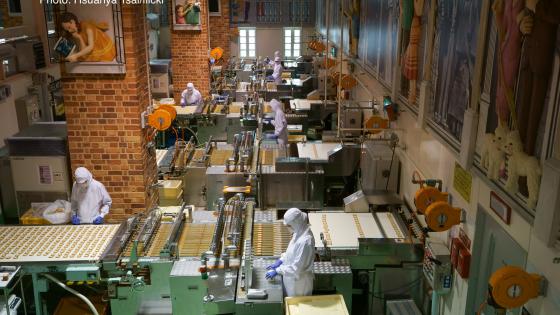Governments spend considerable amounts on promoting activity in their less-developed geographic areas. These ‘place-based’ policies can include public infrastructure investments, lower payroll taxes, support for private lending, and government subsidies for private capital or R&D investments, among others.
How effective are these policies in reducing regional inequality? Among other things, the answer depends not only on how impactful they are on the firms and households that are directly targeted, but also on any knock-on effects that the policy may induce:
- Policies subsidising industries within a region may, through local demand spillovers, increase economic activity in vertically related industries within the same locale (Siegloch et al. 2021). However, to the extent that these demand spillovers traverse targeted and untargeted geographic areas, some of the benefits of the policy may accrue to firms and workers outside of the areas on which policymakers are focusing.
- Policies targeting disadvantaged areas may generate negative local displacement effects, whereby employment generated in a targeted area is at least partially offset by losses in neighboring untreated areas (Ehrlich and Overman 2020, Overman and Einiö 2016). Further, especially in the longer run, place-based policies may alter migration patterns, increasing net migration (and hence labor supply) in targeted areas and thus likely leading to lower wages for incumbent residents in the targeted area.
- Finally, place-based policies may also lead to higher land rents in the target area (Ehrlich and Seidel 2018). To the extent that these higher rents increase the cost-of-living for residents there and benefit landowners — who are likely to be relatively wealthy and who may reside elsewhere in the country — any capitalisation into land prices would reduce the equity benefits of a place-based policy.
In sum, spillovers across jurisdictions can take many forms, manifest over various time horizons, and operate over different geographic scales. As a result, academic economists’ evaluation and policymakers’ design of place-based policies are perennially challenging tasks.
A policy to reduce regional inequality in Türkiye
In a recent article (Atalay et al. 2023), we assess a particular place-based policy – Law 2012/3305, introduced in Türkiye. We pay special consideration to spillovers that occur through domestic trade and mobile labour, both in the short and long term.
The motivation and backdrop for Türkiye's Law 2012/3305 is the large and persistent inequality between provinces in the west and east of the country. Figure 1 displays GDP per capita across Türkiye's 81 provinces as of 2012. It was approximately five times larger in İstanbul than in Ağrı.
Figure 1 GDP per capita by province
Notes: The source for this figure is the Turkish Statistical Institute.
In the same year, the Turkish government introduced a set of place-based subsidies, with the aim of increasing aggregate investment and reducing regional inequality. As part of the policy, the government split the country into six ‘subsidy regions’. Figure 2 presents the assignment of provinces to these six regions. Region 1 includes the largest and richest cities, mostly in the west and northwest, and Region 6 includes the southeastern part of the country, bordering Iran and Iraq.
Figure 2 Assignment of provinces to subsidy regions
Notes: For firms in eligible industries, the statutory subsidy rates were more generous in higher-numbered subsidy regions.
The main components of the subsidy policy were (1) corporate tax rebates in proportion to new capital investment, and (2) exemptions from mandatory social security contributions for new workers hired. According to the policy, only certain industries were eligible to receive subsidies, mainly within the primary and manufacturing sectors. Finally, the policy had an important spatial dimension: firms that hired workers or invested in capital as part of the subsidy programme received more generous support in higher-numbered regions.
In the context of this specific policy, we address three main research questions:
- First, narrowly, did the policy increase economic activity for firms that were eligible to receive the subsidy?
- Second, did the subsidies spill over within the production network?
- And third, to what extent did the new policy reduce regional wage inequality?
Direct effects
In the ‘micro’ part of the paper, we address the first two research questions. We compare economic activity – revenues, capital investment, employment, and marginal costs – across firms with different levels of exposure to the subsidy policy. We find substantial positive effects of the policy. A five percentage point increase in investment tax credits received – roughly equivalent to the difference between the areas with most and least generous subsidies among firms in eligible industries – leads firms’ revenues to increase by 16%, employment to increase by 8%, and marginal costs to decrease by 3%. In addition, leveraging detailed data on the Turkish production network, we document meaningful spillovers from subsidised firms to their suppliers and customers.
Indirect effects
In the ‘macro’ part, we assess the impact of the subsidy policy on regional inequality, using the framework introduced in Caliendo et al. (2019). This model, helpfully, permits consideration of many of the channels through which a subsidy to firms in one industry and province can dissipate or propagate to other parts of the economy:
- First, due to input-output linkages, the customers of subsidised firms enjoy lower material input prices, and the suppliers of subsidised firms have greater demand for their products.
- Second, there is migration across regions, accumulating slowly over time. The subsidy scheme (relative to a world without the policy) will slow net migration from Region 6 to Region 1, depressing (in the long run) real wages in those labor markets relative to a no-policy counterfactual.
- Finally, in this model, landlords own land and structures in areas other than where they live. Subsidies in one region may potentially lead to higher rental prices there, but these increased rents may lead to higher consumption in other regions, including those not targeted by the government.
Based on our calibrated model, we conclude that regional income inequality would have been larger, but only modestly so, absent the policy. Trade and migration meaningfully blunt – with each about equally important – the extent to which place-based subsidies reduce inequality between the poorer parts of the country that the government targeted and the richer parts that it did not target. Spillovers through landlords’ rental income play a negligible role in our model calibration.
Policy implications
There are three broader implications of these findings for our understanding of place-based policies. First, since domestic trade and migration are significant in other countries as well, these spillovers will likely be important in thinking about place-based subsidy schemes enacted elsewhere, beyond Türkiye. Second, since migration responds to slowly to real-wage differentials, the short- and long-run general equilibrium impacts of place-based policies will differ considerably. Third, general equilibrium spillovers may come from faraway locations. This is an important lesson, as well, since certain papers within the literature on place-based policies apply regressions with larger and larger geographic areas to assess general equilibrium impacts.
Our analysis, broad-scoped as it is, is still not a comprehensive investigation of all potential welfare-relevant effects of the policy. It does not estimate the costs involved with the Turkish government raising funds to pay for the subsidies, nor the political economy of potential rent-seeking behavior on the part of potentially eligible firms. On the social benefit side, it does not fully flesh out if there are meaningful agglomeration externalities beyond those captured in our measured supply chain effects. We see these as fruitful areas for future research.
References
Atalay, A, A Hortaçsu, M Runyun, C Syverson and M F Ulu (2023), “Micro- and Macroeconomic Impacts of a Place-Based Industrial Policy,” NBER Working Paper 31293.
Caliendo, L, M Dvorkin and F Parro (2019), “Trade and Labor Market Dynamics: General Equilibrium Analysis of the China Trade Shock”, Econometrica 87(3): 741-835.
Ehrlich, M V and T Seidel (2018), “The Persistent Effects of Place-Based Policy: Evidence from the West-German Zonenrandgebiet,” American Economic Journal: Economic Policy 10 (4): 344-374.
Ehrlich, M V and H G Overman (2020), “Place-based Policies and Spatial Disparities across European Cities”, Journal of Economic Perspectives 34 (3): 128-149.
Overman, H and E Einiö (2016) “Effectiveness of Place-based Policies: UK Evidence”, VoxEU.org, 7 April.
Siegloch, S, N Wehrhöfer and T Etzel (2021), “Regional Firm subsidies: Direct, Spillover, and Welfare effects”, VoxEU.org, 4 June.









